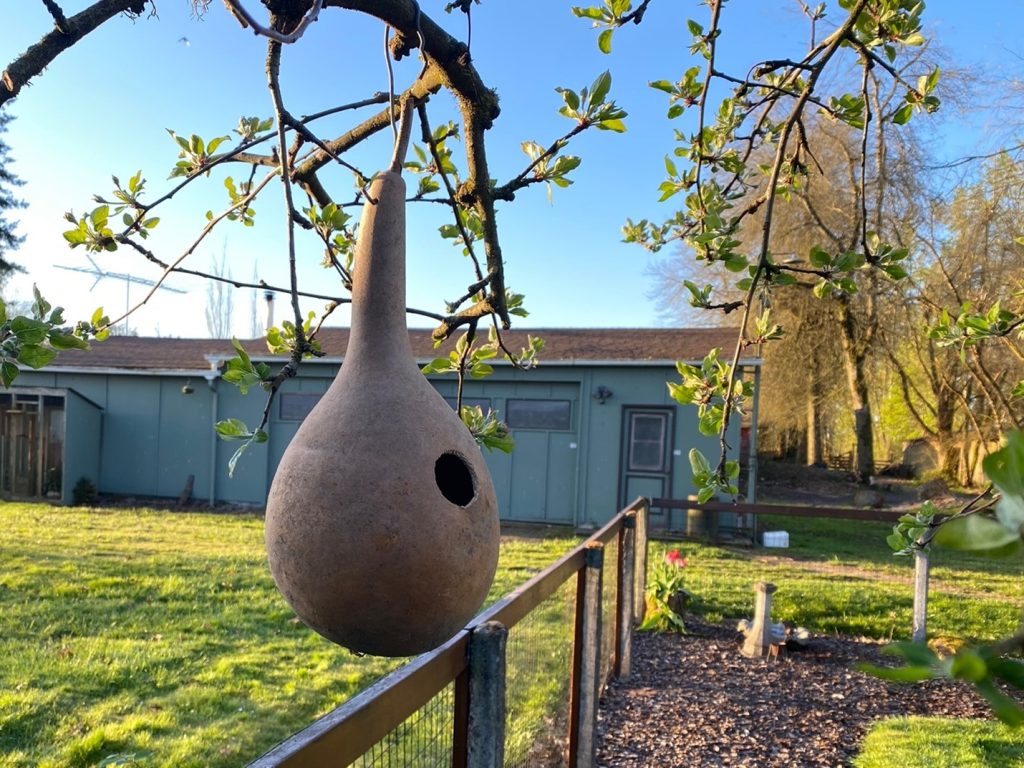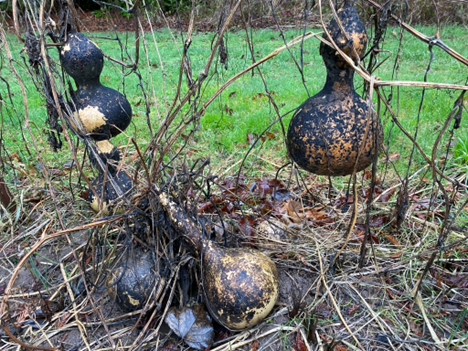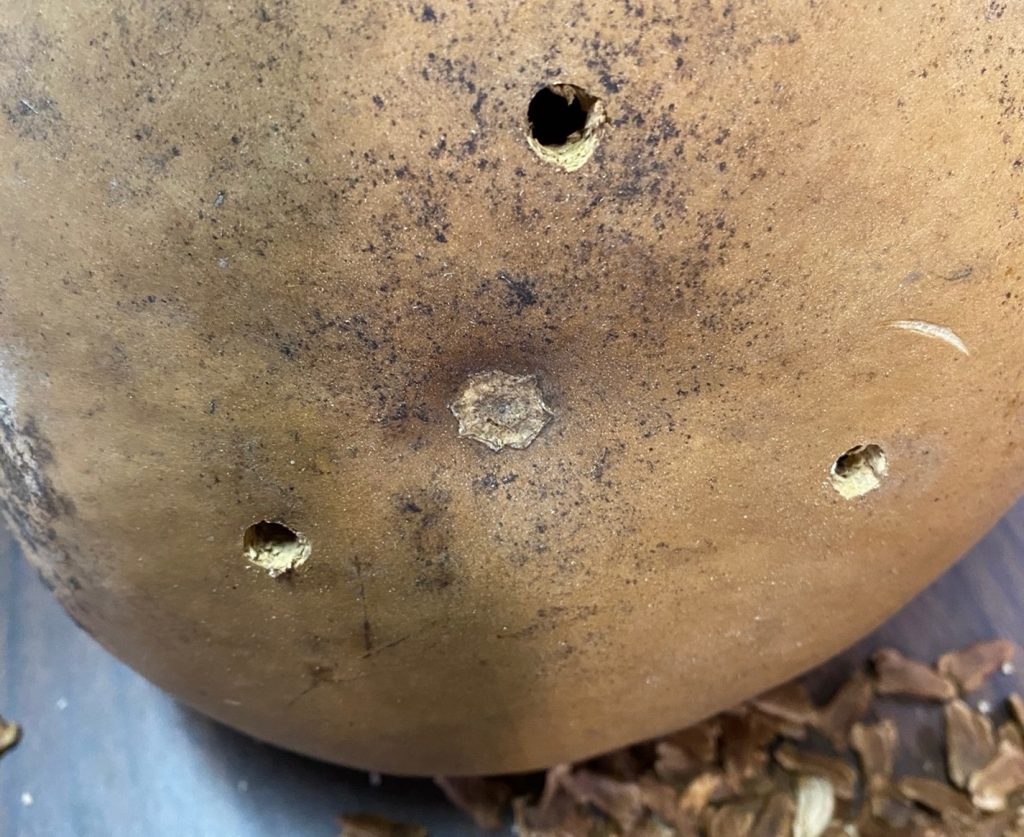Bird House Gourds

You don’t need to make sawdust to build a bird house; you can grow one! Seeds for the aptly named bird house gourds are available at most garden stores. These gourds are not difficult to grow, but do best where they are in full sun and can climb a fence or trellis. Gourds grown on a fence/trellis also tend to be more uniform in shape and cure better over winter. Just a couple of plants are all that is needed. This last year I had two plants which produced 17 bird house-sized gourds.
Cure the Gourds

After your gourds are grown, they will need to cure to prevent rotting. Naturally curing on the vine is the easiest. Just leave them on the vine until there has been at least a couple of hard frosts. Harvest your gourds by cutting them from the vines but be sure to leave a couple of inches of stems which aids in the drying process and helps prevent rot. Harvested gourds can be placed in a cool dry place, like a garage, to finish drying which may take a couple of months. If you grew your gourds on a trellis, you can leave your gourds on the vines all winter to cure and begin drying, even in soggy western Oregon. They may look ugly in mid-winter covered in black mold, but this is just the thin outer later. You can scrub this off along with any mud or dirt when you harvest them. Cleaned and harvested gourds can be set on a solid surface with good air circulation to finish drying.
Make the Birdhouse



Once dried, you can start making your bird house. A variety of tools could be used to make a 1 3/8” to 1 ½” entrance hole. Above, a hole saw on a drill is being used. The size of entrance hole will determine which birds might use your gourd, but I recommend 1 3/8″ to 1 ½” hole. Also drill or poke a few ¼” drain holes in the bottom of the gourd. Inside the gourds, there will be seeds encased in a tough papery membrane that should be cleaned out to give the birds more room. To me this is the most difficult part of the process, but is not too bad. Through the entrance hole, just try to break up the membranes with a butter knife or screw driver. The seeds and membranes can then be shaken out or pulled through the hole. The birds won’t care if you can’t get it all.
Suspend the Birdhouse
The small size of the hole will discourage larger and undesirable birds like starlings. However, suspending the gourd is the best way to discourage starlings and house sparrows which generally don’t like their homes to swing. Tree swallows and violet-green swallows will especially love these gourd bird houses. Swallows feed exclusively on insects, like gnats and mosquitoes so hanging them near your house and around your yard is a great way to assist with pest control. A bird house gourd usually lasts a few seasons before needing to be replaced if left outside.
Help out this spring when you try growing a bird house. Bird house gourds and bottle gourds are great for other craft projects too!


About the Author

A retired wildlife biologist, Dave and his wife Anita, have resided near Turner since 2003. Dave serves as a Director on the Board of MSWCD, the values and services of which he first became aware about 15 years ago while implementing an NRCS conservation easement on their property.
